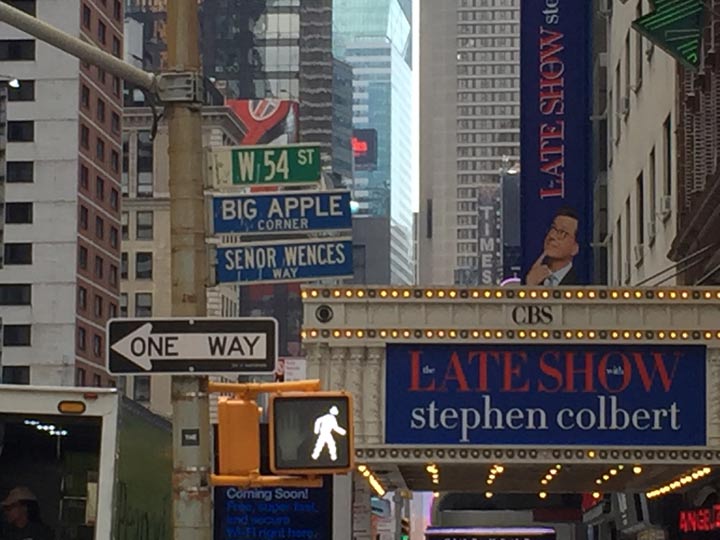Though green is the overwhelming frequency for street sign color in New York City, and most other locations, there was a time when blue was in second place. Blue was first used in the Bronx, between about 1964 and 1984, when NYC employed a color coded system of street signs by borough. In Manhattan and the Bronx, the vinyl color coded signs replaced ‘humpbacked’ signs that Manhattan and the Bronx had shared since the early 1910s. Why did Manhattan and the Bronx share a street sign style? The Bronx became a borough in 1898, but it shared New York County with Manhattan until 1914, when it became NYS’s newest county; the street signs were produced for both boroughs, which shared a county.
After all NYC street signs became green in the early 1980s, blue was then used for mark special streets and sections of streets that had been named for local personages, or in some cases, people who were famed on a particular street. A pair of those special “blues” can still be found on Broadway and West 54th Street.
I’m not sure why 54th was chosen to honor a NYC nickname, the Big Apple. Consensus holds that it originated in the early 1920s in a horse racing column in The Morning Telegraph by John FitzGerald. Personally I’m not fond of the nickname and have never used it; New York City isn’t known as a place where an overwhelming number of apple trees can be found, or where any varieties were produced, with the exception of the Newtown Pippin.
Señor Wences (Wenceslao Moreno, 1896-1999) was a Spanish immigrant who developed a ventriloquist act using his hand, where he painted a hand and a mouth, and a disembodied head in a box. He perfected the shtick for decades, whether in the Betty Grable movie Mother Wore Tights, the Milton Berle TV show, and, late in life, with Ann Miller and Mickey Rooney’s Broadway classic Sugar Babies. Why is his sign here? Señor Wences made nearly a hundred appearances in the Ed Sullivan Theatre, built in 1927 by Arthur Hammerstein (“Hammerstein’s Theatre”); after decades as the Manhattan Theatre it was renamed for Broadway columnist/variety show host Ed Sullivan in 1967, as the theater hosted his show for most of its 1948-1971 run. In later years, the theater has hosted David Letterman’s and Stephen Colbert’s chat shows.
Check out the ForgottenBook, take a look at the gift shop, and as always, “comment…as you see fit.”
8/1/19


4 comments
I still miss the borough color coded signs, as well documented in the earlier, linked FNY post . Those signs made it easy to determine where the Queens-Brooklyn boundary was located. Similarly, in Marble Hill where Manhattan and The Bronx share a short land boundary, the signs were handy as well. And I especially miss the large Manhattan signs that were installed in the late 1950s and early 1960s on a few N-S avenues – 3rd, 5th, 7th (above 110th St.), 9th, and Broadway. Those signs were easy to read with large black letters on a bright yellow background. Now that the law says I am a senior citizen, I appreciate large street signs.
What about the special large, light-up blue signs on Park and Madison Avenues?
Re: Changing street sign colors to all green citywide
Didn’t the powers that be ever hear of the saying, IF IT AINT BROKE, DONT FIX IT.
I think the Feds had something to do with requiring standardizing street signs, not sure though. I liked the yellow and black.